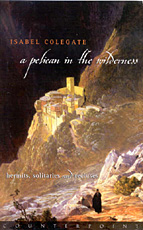Isabel Colegate is an English author of 13 previous books including The Shooting Party. This is her first work of nonfiction, and one senses that she savors solitude in her career as a writer. She notes at the outset: "What one might call the hermit tendency constitutes a thin but uninterrupted thread through history, a pull of the tide towards some other moon, a nostalgia for paradise or a hope of heaven. Whether for a poet or a misanthrope, a mystic or a seeker for a moment's silence, there has always been a need for a hermitage."
Recluses follow the eremitic path, seeking the riches of a life apart from others. Colegate ponders this impulse in holy hermits who have retreated to the hills of China, hidden away in the forests of Russia, or wandered through crowds by the Ganges in Benares. She writes about St. Seraphim of Sarov, the most beloved of hermits; St. Anthony, whose temptations have been imagined by Hieronymus Bosch and Gustav Flaubert; and St. Simeon, the most famous of the stylites, who lived on top of a pillar that became a place of pilgrimage.
Colegate hits high stride in her commentary on the link between nature and solitude in the consciousness of William Wordsworth, Emerson, and other literary idealists. Of course, Henry David Thoreau had the true hermit's spirit pulsating in his blood. He once admitted: "I find it wholesome to be alone the greater part of the time. To be in company, even with the best, is soon wearisome and dissipating. I love to be alone."
Colegate wonders about the future of hermits. Will they be able to fine any more places apart from the bustling world where they can nurture their souls in solitude?
